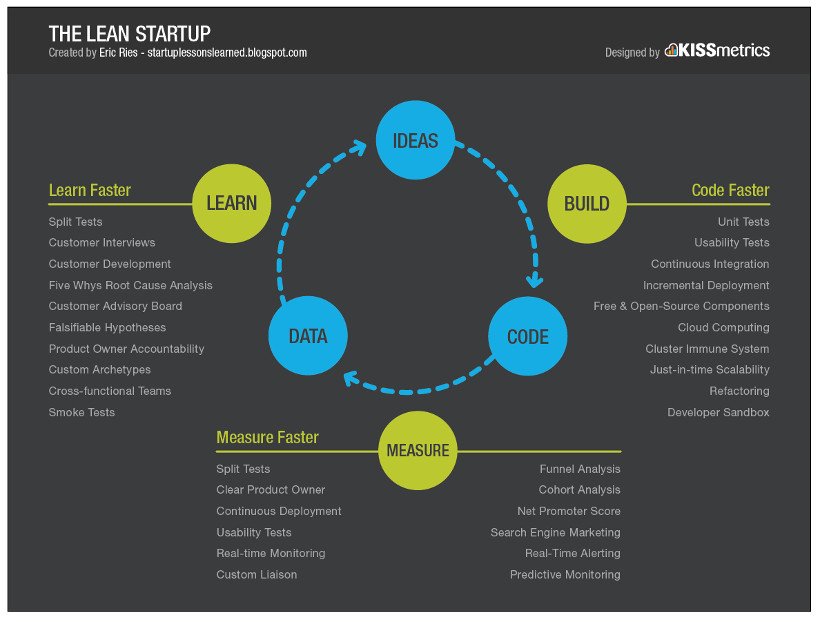Here’s How to Found A Successful Startup — In 7 Steps
The Lean Startup has inspired entrepreneurs from all over the world to start their own businesses.
The author, Eric Ries, is a Harvard graduate who offers some very good advice to those who are aspiring entrepreneurs.
The Lean Startup by Eric Ries - What I Learned
This is the basic model for Lean Manufacturing that Eric Ries suggests every entrepreneur to use when starting a business.
In a nutshell…
The Lean Startup by Eric Ries is all about a new way to build and manage startups so they can succeed. It's based on lean manufacturing, but for new businesses. Here's a breakdown of the main ideas:
1. Build-Measure-Learn Cycle
The Build Measure Learn Cycle is crucial to understand in a world of competitive startups and angel investors who expect rapid results.
The main idea is the Build-Measure-Learn loop. This is all about quickly turning ideas into products, seeing how customers react, and deciding whether to change things or keep going. Startups should create a Minimum Viable Product (MVP) to test their ideas with real customers fast.
2. Minimum Viable Product (MVP)
An MVP is the simplest version of a product that can still show if the idea works. It’s not about making a bad product, but about building just enough to start learning. This helps avoid wasting time and money on stuff customers don’t want.
3. Validated Learning
Validated learning means testing your guesses through experiments and looking at the data. By doing this, startups get real evidence about what works. This helps make better decisions and reduce uncertainty.
4. Innovation Accounting
Innovation accounting is a way to measure progress when things like revenue and market share don’t make sense yet. It focuses on useful metrics that can guide decisions early on. Important metrics include how many customers you get, how many stay, and how they interact with your product.
5. Pivot or Persevere
Startups often need to decide whether to pivot (change the product or strategy) or persevere (keep going with the current plan). This choice should be based on what you learn from the MVP and customer feedback. Pivots can mean changing the product, business model, technology, or target customers.
6. Build a Sustainable Business
This is the S-BMI. It models how a sustainable business works.
The goal is to build a business that lasts by finding a repeatable and scalable business model. Startups should keep experimenting and adapting until they find a model that works.
7. Lean Thinking in Management
Lean Startup ideas also apply to how you manage the company. Leaders should encourage experimenting, work in small batches, and avoid waste. This creates a space where new ideas can grow.
So what can you learn?
Start Small: Begin with an MVP to test your ideas quickly.
Iterate Rapidly: Use the Build-Measure-Learn loop to keep improving your product.
Focus on Learning: Look for validated learning over traditional metrics in the early stages.
Be Ready to Pivot: Be prepared to make big changes based on what you learn.
Aim for Sustainability: Keep experimenting to find a business model that can grow and last.
By following these principles, startups can deal with the unknowns of creating new things and have a better chance of building products that people actually want.
And the best part is, you can do it too. Apply this kind of thinking to your ideas and watch them bloom into reality. Next week we’ll cover another book on business so that you don’t have to read it. PODCAST COMING SOON………………
Of course, feedback is always appreciated. Let us know if you enjoyed the read, if it was better than last time, or what you would like to see more of. Thank you so much for your time!








